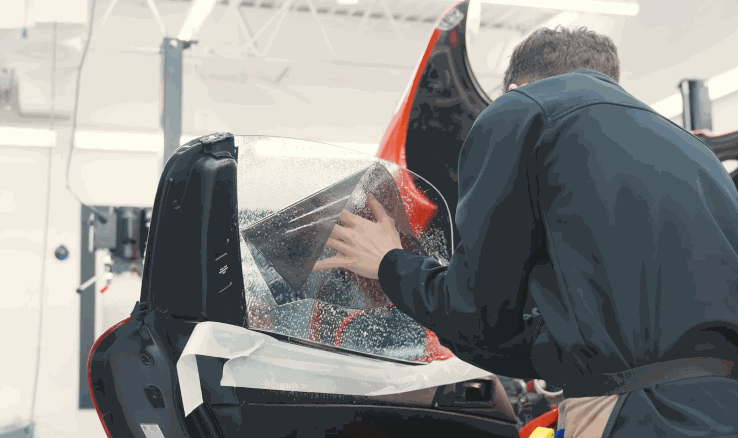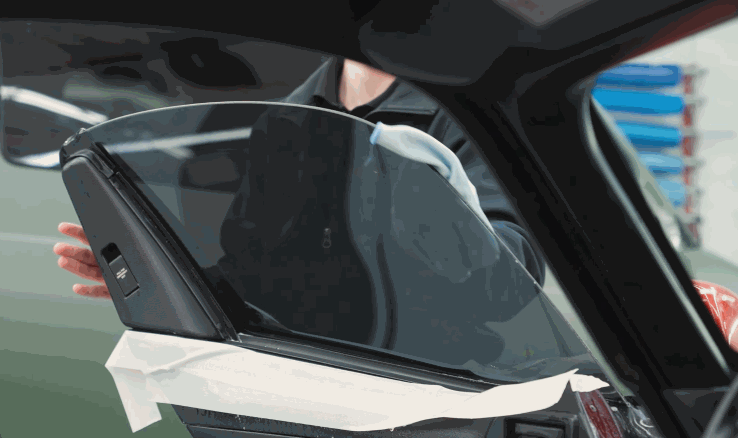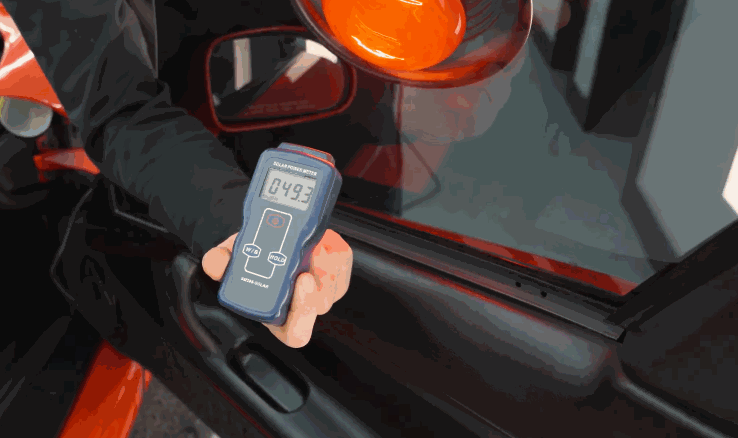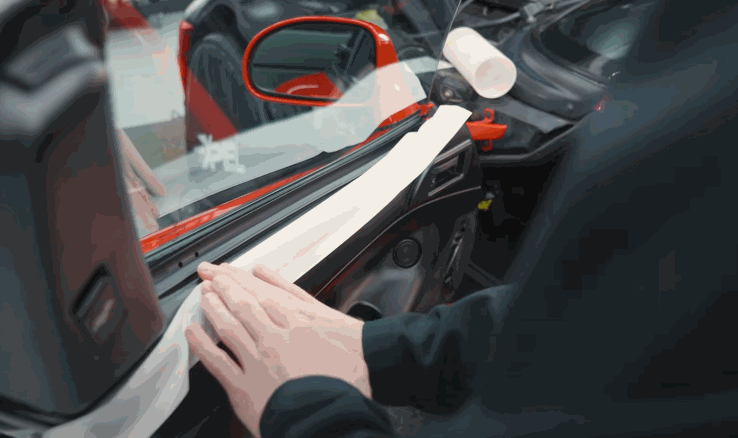When you spend as much time on Florida roads as we do, you quickly realize how essential car window tinting becomes. The combination of intense sunlight, constant heat, and long drives between cities such as Orlando, Tampa, and Jacksonville can turn any vehicle into an uncomfortable space if the windows are completely unprotected. That is why so many drivers view window tint as more than a cosmetic upgrade. It is a practical way to make every trip safer, cooler, and easier on the eyes.
Here at Classic Details we work with these conditions every day. We have felt what it is like to sit in a vehicle that has been parked under the Orlando sun at two in the afternoon, and we have experienced how much more comfortable a commute becomes when the car window tinting is done correctly. Our goal is to help Florida drivers understand how this simple addition changes daily driving in real and noticeable ways.
Understanding Car Window Tinting

Car window tinting is the process of applying a thin film to the inside of a vehicle’s glass. This film is designed to filter sunlight, improve comfort, and reduce the impact of the strong UV rays that hit Florida throughout the year. Window tint is not complicated at its core, but the results it produces are significant, especially for drivers dealing with constant brightness and heavy traffic under a clear sky.
The film works by absorbing or rejecting a portion of the sun’s energy before it enters the cabin. This leads to several clear benefits.
- Better heat rejection that helps keep the interior cooler.
- Noticeable glare reduction that improves visibility and comfort for the eyes.
- Increased interior comfort during long drives in areas such as Daytona or Palm Coast.
- The added advantage of a privacy film that makes the cabin feel more secure.
- UV protection that helps shield passengers and prevents premature wear on the dashboard and seats.
Because Florida receives strong sun exposure throughout the entire year, window tint plays a bigger role here than in many other states. Even on cloudy days the sun is bright enough to heat the interior quickly, so the film becomes a consistent layer of protection rather than a seasonal accessory.
Why Window Tint Matters for Florida Drivers
Driving in Florida comes with a few unique challenges. Coastal reflections brighten the road near beaches from Clearwater to Cocoa. Afternoon heat peaks faster and lasts longer, often staying high well into the evening. Highways such as I Four or US One expose drivers to constant sun glare that can make even a short trip tiring. These pressures are exactly why so many Florida residents rely on quality window tint.
In everyday driving, a sun control film becomes a simple way to increase comfort without changing the way you use your vehicle. It reduces glare during the busiest hours, keeps the interior cooler during stops, and provides a softer light level inside the cabin. These improvements add up, especially for anyone who spends time in Orlando traffic or makes routine drives along the Tampa waterfront during late afternoon.
Window tint also makes long drives more pleasant. The film stabilizes interior light levels so your eyes adjust more naturally. It prevents that constant squinting that Florida drivers know so well. With the right installation, you get a driving experience that feels more relaxed and less exposed to the elements.
Types of Window Tint Films

Florida drivers have access to several types of tint films, each designed to perform differently depending on the materials used and the level of protection needed. While the choices may seem similar at first glance, they offer distinct advantages related to clarity, durability, and heat control. Understanding these differences helps you choose a premium tint film that truly fits the way you drive. The most common categories include:
Dyed tint
This is the entry level option. It provides a darker look, moderate glare reduction, and basic interior comfort. It is not as strong in heat rejection as other films, but it offers an even appearance that many drivers appreciate.
Carbon tint
This film uses carbon particles that naturally reject more heat without interfering with visibility. Carbon tint delivers better clarity than dyed film and resists fading more effectively. It also feels more stable under Florida’s constant sunlight.
Ceramic window tint
This is the advanced option. Ceramic tint uses non conductive nano ceramic particles that offer exceptional heat rejection and optical clarity. Drivers who spend long hours on the road in areas such as Tampa or Orlando often choose ceramic tint because it manages cabin temperature more efficiently and maintains a clean look for years. It is considered a premium tint film due to its long lifespan and superior performance.
Each tint type has a place depending on your comfort level, your daily routes, and how much heat control film protection you want during Florida’s hottest months.
Florida Window Tint Laws and What Drivers Should Know
Florida has clear rules that determine how dark your window tint can be. These Florida tint regulations revolve around something called visible light transmission. This percentage indicates how much light can pass through the glass once the tint is applied. Staying within legal tint percentages ensures the vehicle remains compliant during routine checks and keeps visibility safe for both the driver and law enforcement.
Here is a simple breakdown of how the rules apply:
- Sedans can have a different allowable darkness on the front windows compared to the rear windows.
- SUVs and trucks have more flexibility on the rear portions of the vehicle, but the front windows must still follow the same standards as sedans.
- Windshields can only have a specific level of tint on the top portion to reduce glare without affecting overall visibility.
The goal of these laws is not to limit comfort. It is to maintain a balance between heat control, safety, and road awareness. Most Florida drivers find that they can enjoy the advantages of window tint while staying well within regulations. When installed correctly with quality films, compliance is simple and stress free.
How Professional Installation Makes All the Difference in Florida

A proper installation is just as important as choosing the right film. Florida’s climate puts window tint through constant challenges. Intense sunlight, humidity, and daily stop and go driving can expose imperfections in lower quality work. This is why many drivers choose experienced teams who understand how tint behaves in this environment.
A clean installation environment is essential. Any dust on the glass can create small bubbles or distortions over time. Precise tint film alignment ensures edges sit flush against the window to protect the film from lifting in high heat or during repeated door use. A professional window tint application also improves clarity by removing tiny air pockets that might affect visibility.
At Classic Details we prioritize preparation, technique, and consistency. Every window is cleaned thoroughly before the film touches the surface. The film is shaped with exact measurements so it settles smoothly against the glass. Florida heat can be tough on poorly installed tint, but with proper care and the right methods the film performs better, lasts longer, and provides a cleaner look day after day.
How Window Tint Protects Your Interior Over Time
Florida sunlight is strong enough to wear down a vehicle’s interior faster than most drivers realize. After years of working on cars across the state, we have seen the difference that proper window tint makes. The right film becomes a shield that slows fading, reduces heat stress, and protects the small details that keep a cabin looking new.
Long term tint performance starts with UV fade protection. The film blocks a significant portion of the ultraviolet rays that are responsible for discoloration on dashboards, door panels, and upholstery. This matters even more in coastal areas where sunlight reflects off the water and intensifies exposure. Drivers near Daytona Beach, Sarasota, or Fort Lauderdale deal with this effect often. Window tint helps reduce that constant pressure, allowing interior materials to stay vibrant for a much longer time.
There is also a protective benefit for electronics. Navigation screens, digital clusters, and touch controls all sit under direct light during long days outdoors. A quality tint reduces heat buildup inside the cabin, lowering stress on these components and supporting better interior preservation. This level of protection is valuable for Florida drivers because the sun never truly lets up. Even milder days still expose the interior to high brightness levels.
Window Tint and Driving Comfort in Everyday Florida Life

Driving across Florida exposes you to a level of sunlight and heat that can wear you down quickly. Whether you spend your days moving between Orlando and Kissimmee, heading toward the coast for a beach afternoon, or dealing with Miami traffic after work, the conditions can feel intense. That is when window tint becomes more than a style choice. It becomes a genuine comfort upgrade.
You can feel the difference in several everyday situations.
- Long midday drives: Florida heat builds fast. If you are sitting on I Four or US Ninety Five during a slow stretch, tint helps the cabin stay cooler and reduces the draining feeling that comes with sitting in the sun.
- Trips near the coast: Bright reflections from the water around Clearwater Beach or Daytona can hit your eyes at unexpected angles. Tint softens that light and helps you stay focused and comfortable.
- Afternoon traffic in busy areas: Places like International Drive in Orlando or Brickell in Miami are known for heavy congestion. With tint, the interior light stays more balanced and the temperature remains manageable during frequent stops.
Many Florida drivers tell us that once Classic Details installs their tint, their daily routines genuinely feel easier. The cabin no longer floods with harsh light. Visibility improves even during difficult hours. The temperature stays more consistent, and the entire drive feels calmer. It is a small change that brings noticeable comfort across the state.
Choosing the Right Tint for Your Needs in Florida
With so many tint options available, the best choice often depends on your lifestyle and the routes you drive. Someone who spends most of the week on long highways might want a stronger heat rejecting film, while a driver who focuses on visual comfort may prefer a specific tint shade selection that balances clarity and privacy. Florida’s combination of high temperatures and bright skies makes it important to consider both performance and personal preference.
A performance tint film provides better temperature control and tends to last longer under constant sun. Ceramic tint often stands out here because it handles harsh conditions without fading or losing clarity. Drivers who spend time on coastal routes or busy urban areas might feel the difference more quickly than they expect.
At Classic Details we help customers compare features and choose a film that feels right for their everyday patterns. It helps to think about where you usually park, how long your commutes are, and how much heat you want to block on the hottest afternoons. These simple details guide you toward window tint that genuinely improves life behind the wheel.
Caring for Your Window Tint in Florida Weather
Once your tint is installed, a little attention goes a long way in keeping it clear, smooth, and performing at its best. Florida heat and humidity can influence how the film settles during the first days, so taking a few simple steps helps avoid issues and supports long term quality.
Tint maintenance begins with understanding curing time. Fresh film needs time to fully bond to the glass, and during this period it is normal to see mild haze or small moisture pockets. These will clear as the film dries. The key is to avoid rolling the windows down too soon. Most tint installations need several days of stillness, and in humid parts of Florida this process can take slightly longer. Here are a few friendly reminders for the best results:
- Use soft microfiber towels for cleaning to prevent scratches.
- Choose ammonia free cleaners to protect the surface of the film.
- Keep windows rolled up during the initial curing time to avoid lifting the edges.
- Allow extra drying time if you live near the coast where moisture stays high.
- Gently wipe away salt or sand particles after beach trips to prevent abrasion.
Florida climate care is simple when you pay attention to these small details. With proper handling and routine cleaning, your tint stays crisp and clear, even through long summers and rainy seasons.
Conclusion
Window tint offers so much more than darker windows. It brings comfort, protection, and a better driving experience to anyone navigating Florida’s bright skies and busy roads. From reducing heat during midday traffic to protecting your interior from long term sun exposure, tint becomes a steady companion that supports both style and function.
As part of the Classic Details team, we have seen how much of a difference quality tint can make. We work with Florida conditions every day, and we understand the value that comes from choosing films that stand up to heat, humidity, and year round sunlight. When installed correctly, car window tinting improves the cabin environment, helps preserve interior materials, and makes daily driving noticeably more enjoyable.
If you are considering window tint for your vehicle, we are here to help. Reach out to Classic Details for professional car window tinting and guidance from people who know exactly how tint behaves in Florida. We would be happy to answer questions, offer recommendations, and ensure your vehicle gets the protection it deserves.
